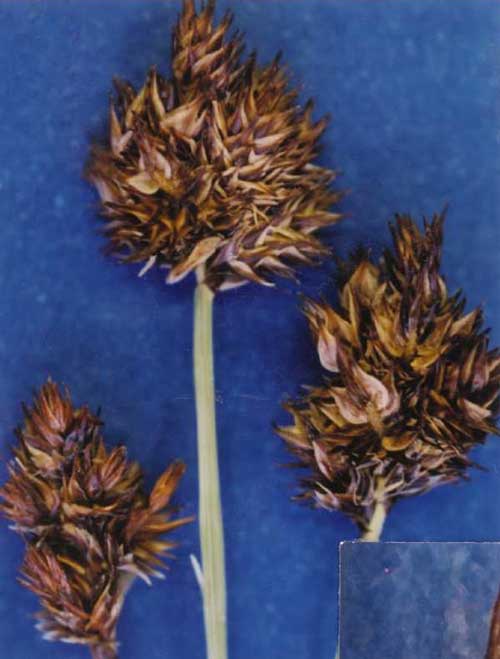
Inflorescences of Carex abrupta from Hurd, E.G., N.L. Shaw, J. Mastrogiuseppe, L.C. Smithman, and S. Goodrich. 1998. Field guide to Intermountain sedges. General Technical Report RMS-GTR-10. USDA Forest Service, RMRS, Ogden. Courtesy of USDA FS RMRS Boise Aquatic Sciences Lab.
Classification System: APG IV
Superregnum: Eukaryota
Regnum: Plantae
Cladus: Angiosperms
Cladus: Monocots
Cladus: Commelinids
Ordo: Poales
Familia: Cyperaceae
Subfamilia: Cyperoideae
Tribus: Cariceae
Genus: Carex
Species: Carex abrupta
Name
Carex abrupta Mack., Bull. Torrey Bot. Club 43: 618 (1916 publ (1917)).
Distribution
Native distribution areas:
Continental: Northern America
Regional: Northwestern U.S.A.
Idaho, Oregon.
Regional: Southwestern U.S.A.
California, Nevada.
References: Brummitt, R.K. 2001. TDWG – World Geographical Scheme for Recording Plant Distributions, 2nd Edition
References
Primary references
Mackenzie, K.K. 1917. Bulletin of the Torrey Botanical Club. New York 43: 618.
Links
Govaerts, R. et al. 2019. Carex abrupta in World Checklist of Selected Plant Families. The Board of Trustees of the Royal Botanic Gardens, Kew. Published online. Accessed: 2019 Dec 13. Reference page.
International Plant Names Index. 2019. Carex abrupta. Published online. Accessed: Dec 13 2019.
Tropicos.org 2019. Carex abrupta. Missouri Botanical Garden. Published online. Accessed: 13 Dec 2019.
USDA, ARS, Germplasm Resources Information Network. Carex abrupta in the Germplasm Resources Information Network (GRIN), U.S. Department of Agriculture Agricultural Research Service. Accessed: 08-Apr-12.
Vernacular names
English: abruptbeak sedge
Carex abrupta is a species of sedge known by the common name abrupt-beaked sedge or abruptbeak sedge. It is native to the western United States from California to Idaho, where it grows in moist mountain habitat such as meadows.
Description
This sedge forms a dense, erect clump exceeding 20 centimeters in height. The inflorescence is a rounded cluster of spikes 1 to 2 centimeters wide. Each fruit is surrounded by a sac called a perigynium which is boat-shaped to scoop-shaped with a very narrow, cylindrical beak coppery red to dark brown in color.
Retrieved from "http://en.wikipedia.org/"
All text is available under the terms of the GNU Free Documentation License

